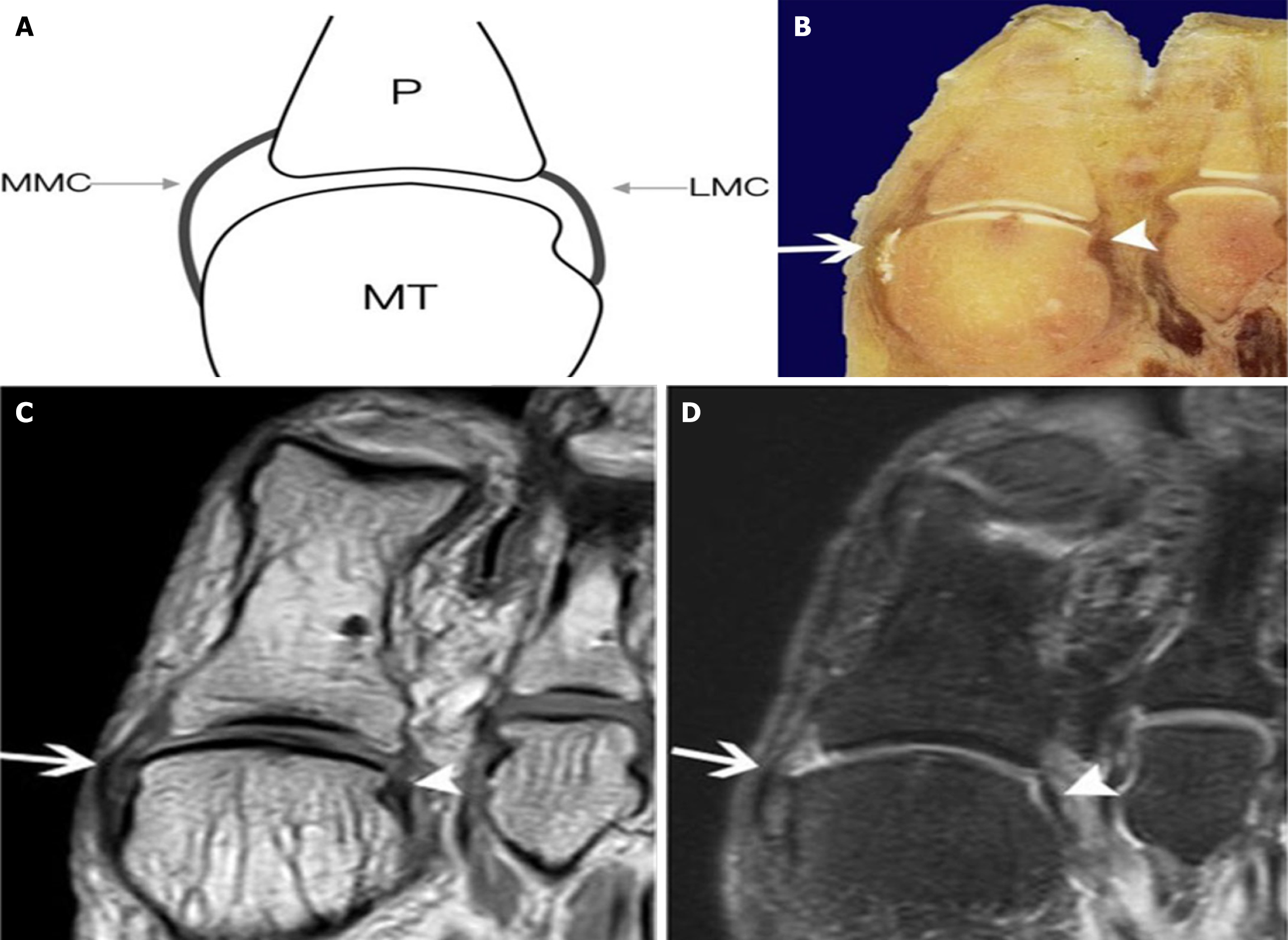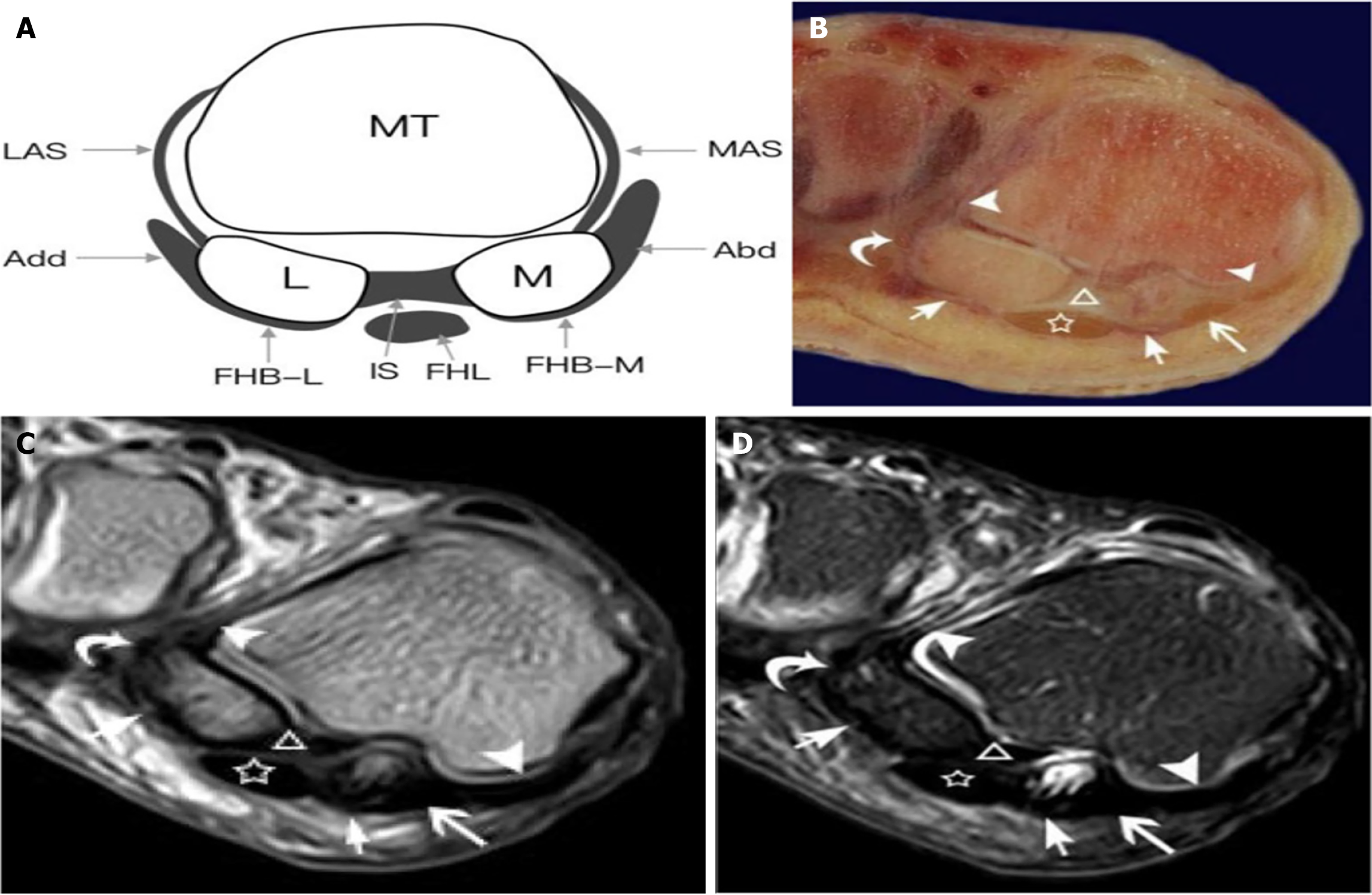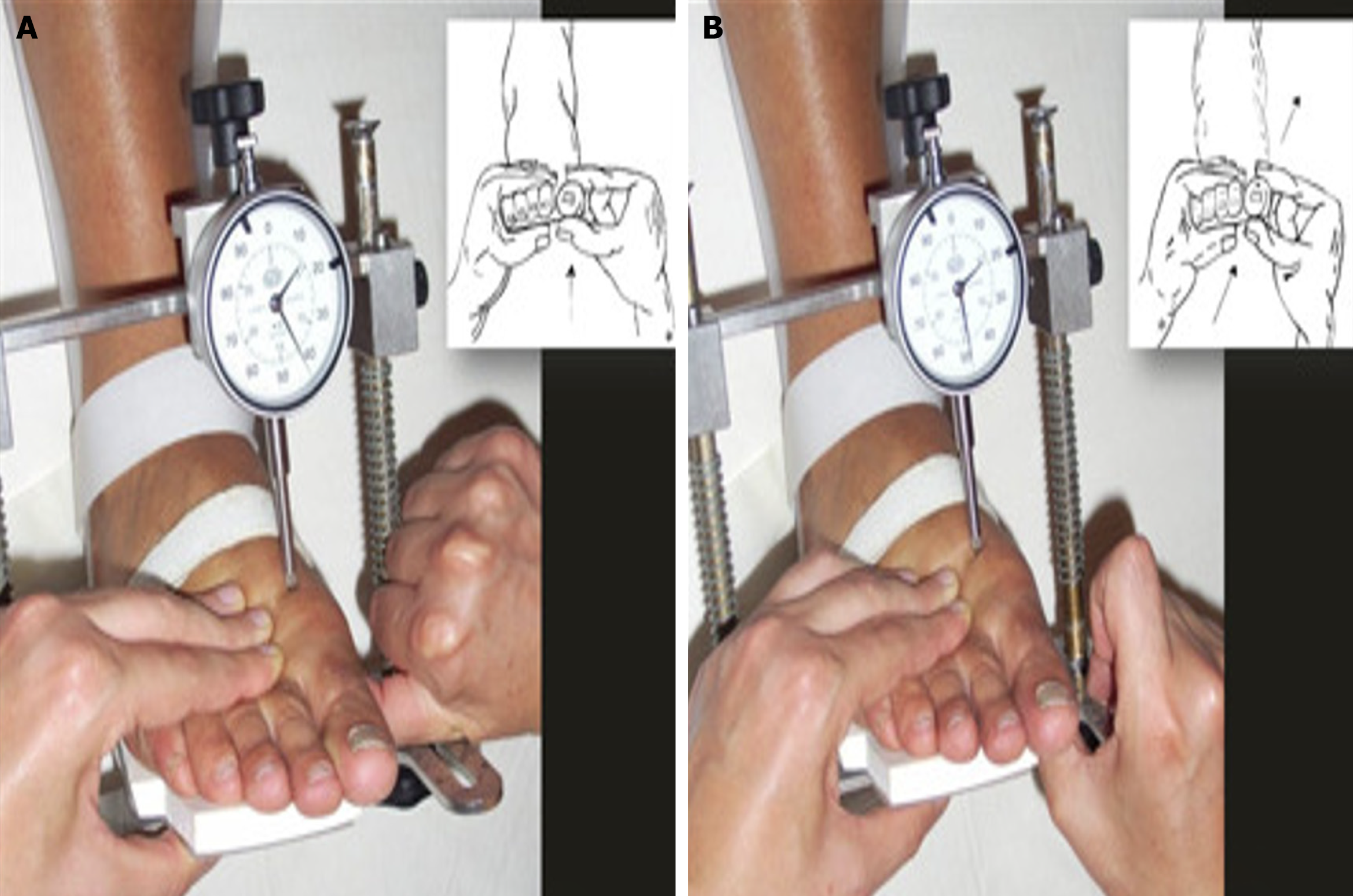Copyright
©The Author(s) 2025.
World J Orthop. Apr 18, 2025; 16(4): 102506
Published online Apr 18, 2025. doi: 10.5312/wjo.v16.i4.102506
Published online Apr 18, 2025. doi: 10.5312/wjo.v16.i4.102506
Figure 1 A 33-year-old right foot specimen demonstrating the main lateral and medial collateral ligaments[22].
Citation: Wang JE, Bai RJ, Zhan HL, Li WT, Qian ZH, Wang NL, Yin Y. High-resolution 3T magnetic resonance imaging and histological analysis of capsuloligamentous complex of the first metatarsophalangeal joint. J Orthop Surg Res 2021; 16: 638. Copyright© The Author(s) 2021. Published by Springer Nature. This image is licensed under a Creative Commons Attribution 4.0 International License, which permits use, sharing, adaptation, distribution, and reproduction in any medium, provided the original author(s) and source are credited. License details: https://creativecommons.org/Licenses/by/4.0/. A: Diagrammatic illustration of the first metatarsophalangeal joint; B: Transverse anatomical section; C: T1-weighted magnetic resonance imaging of the foot; D: T2-weighted selective spectral attenuated inversion recovery magnetic resonance imaging of the foot. LMC: Main lateral collateral ligament (white arrowhead); MMC: Main medial collateral ligament (white arrow); MT: Metatarsal; P: Phalanx.
Figure 2 A 45-year-old right foot specimen revealing the capsuloligamentous complex of the first metatarsophalangeal joint[22].
Citation: Wang JE, Bai RJ, Zhan HL, Li WT, Qian ZH, Wang NL, Yin Y. High-resolution 3T magnetic resonance imaging and histological analysis of capsuloligamentous complex of the first metatarsophalangeal joint. J Orthop Surg Res 2021; 16: 638. Copyright© The Author(s) 2021. Published by Springer Nature. This image is licensed under a Creative Commons Attribution 4.0 International License, which permits use, sharing, adaptation, distribution, and reproduction in any medium, provided the original author(s) and source are credited. License details: https://creativecommons.org/Licenses/by/4.0/. A: Schematic coronal diagram through of first metatarsophalangeal joint and the sesamoid bones; B: Coronal anatomic section; C: and D: T1-weighted and T2-weighted spectral attenuated inversion recovery magnetic resonance imaging of the foot. LAS: Lateral accessory sesamoid ligament; Add: Adductor hallucis tendon; MT: Metatarsal; MAS: Medial accessory sesamoid ligamen; Adb: Abductor hallucis tendon; L: Lateral sesamoid; M: Medial sesamoid; FHB-L: Lateral head of flexor hallucis brevis tendon; IS: Intersesamoid ligament; FHL: Flexor hallucis longus tendon; FHB-M: Medial head of flexor hallucis brevis tendon; White triangle: The intersesamoid ligament; White pentagram: Tendon of flexor hallucis longus; White arrowheads: The accessory sesamoid ligaments; White short arrows: The flexor hallucis brevis tendons both medial and lateral heads; White long arrow; White curved arrow: The abductor hallucis and adductor hallucis tendons; White circle: The medial sesamoid phalangeal ligament.
Figure 3 A curved beam and a truss are often utilized when modeling the medial arch[39].
Citation: Ghanem I, Massaad A, Assi A, Rizkallah M, Bizdikian AJ, El Abiad R, Seringe R, Mosca V, Wicart P. Understanding the foot's functional anatomy in physiological and pathological conditions: The calcaneopedal unit concept. J Child Orthop 2019; 13: 134-146. Copyright© The Author(s) 2021. Published by SAGE Publications. This image is distributed under the terms of the Creative Commons Attribution-NonCommercial 4.0 International License (CC BY-NC 4.0), which permits non-commercial use, reproduction, and distribution of the work without further permission, provided the original work is properly attributed. License details: https://creativecommons.org/Licenses/by-nc/4.0/. A: The longitudinal arch of the foot represented by a truss (F represent vertical descending load). The arrows represent the interior reaction forces; B: The windlass mechanism described by Hicks in 1954: 21 the arch raising movement and ray plantarflexion are synchronous; C: The coronal arch of the foot may be represented by a uni-or a multisegmental arcuate structure: The load produces a compression force at the convexity, and a traction force at the concavity.
Figure 4 The examiner applies force to the plantar side of the first metatarsal head with one hand, immobilizing the second to fifth metatarsal bones with the other[45].
The patient was seated in a non-weightbearing position while the displacements were measured using the Klaue method. Citation: Biz C, Maso G, Malgarini E, Tagliapietra J, Ruggieri P. Hypermobility of the First Ray: The Cinderella of the measurements conventionally assessed for correction of Hallux Valgus. Acta Biomed 2020; 91: 47-59. Copyright© 2020 Acta Bio Medica Society of Medicine and Natural Sciences of Parma. This image is licensed under a Creative Commons Attribution 4.0 International License, which permits unrestricted use, distribution, and reproduction in any medium, provided the original author(s) and source are credited. License details: https://creativecommons.org/Licenses/by/4.0/. A: The force is applied initiall in a purely dorsal direction; B: At a 45-degree dorsomedial angle to the transverse plane.
- Citation: Embaby OM, Elalfy MM. First metatarsophalangeal joint: Embryology, anatomy and biomechanics. World J Orthop 2025; 16(4): 102506
- URL: https://www.wjgnet.com/2218-5836/full/v16/i4/102506.htm
- DOI: https://dx.doi.org/10.5312/wjo.v16.i4.102506
















